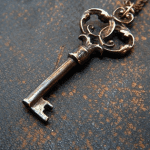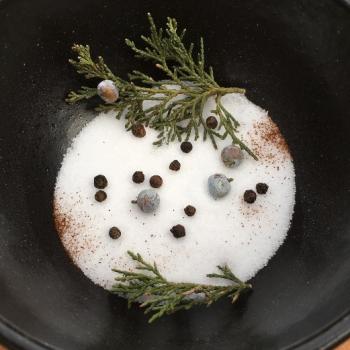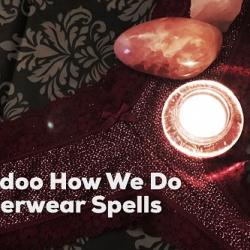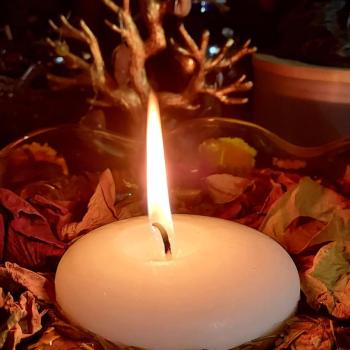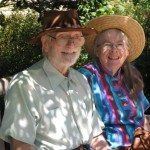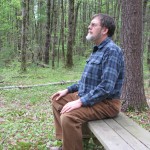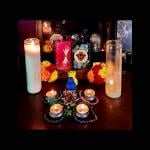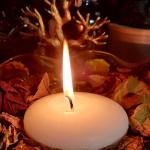Recently, I blogged about my enjoyment of a sport I’m no longer able to practice: kendo-style sparring with padded swords (boffers, to those in the know). The same back injury that keeps me from sitting down as I type these words took the sword out of my hands for good–though the glory–at least with my 9th grade students–lives on.
I shared that story on the blog partly because it keeps my spirits up, in this long and pain-filled winter, to think of myself as active and athletic, rather than as injured and middle-aged. (Perhaps it’s most accurate to admit that both are true.) But I also enjoy  the irony of apparent contrasts: the aging Quaker lady, peering through spectacles on the bridge of her nose, who enjoys the immediacy and physicality of whacking somebody with a great big implement of destruction–while trying not to get whacked in return.
the irony of apparent contrasts: the aging Quaker lady, peering through spectacles on the bridge of her nose, who enjoys the immediacy and physicality of whacking somebody with a great big implement of destruction–while trying not to get whacked in return.
But there have been a number of thoughtful questions in response to my story, both here and in person. Wasn’t this before I was a Quaker? one friend asked, with the implication that, surely, I would not engage in such a sport now. Doesn’t this kind of thing undermine my pacifism? asked another.
The questions deserve serious thought. And nine years into my Quaker practice, maybe it’s time to take stock of the state of my peace testimony–the thing that brought me into the Society of Friends to begin with, after all.
So–to start with the first question that occurs to me–if I could wield a sword again, would I?
Hell, yes. In a heartbeat.
Well, OK. Given the fact that whacking people with great big swords is not something Quakers are generally known for, why? What makes me miss it so much?
Well, it’s physically exhilarating, the way skiing down a steep, icy mountainside, on a clear and bitterly chilly morning is exhilarating… that feeling of being on the edge of disaster, and the only thing that staves it off is being utterly and entirely present and in my body, reacting to my environment physically long before my brain can form any conscious thoughts about it at all.
For a very, very verbal person, perennially in my head, those moments of being forced to be wholly in my animal self are very precious.
And it’s… beautiful. There is an element of grace in any sport done well, perhaps. But they call the composition of stage combat “choreography” for a reason: it is a dance. And perhaps I did not dance as gracefully as some, but I did love it, and for many of the same reasons I love to dance. It just feels… beautiful.
Finally, sparring also calls on my reserves of physical courage. Unlike a lot of women, I grew up spending most of my time with a brother, and the two of us fought like cats and dogs for years.
And boffers, though padded so as not to do real injury, do hurt when they connect. They sting! And, well, for the sake of keeping this blog rated PG, let’s just say that the rather silly looking armor they often depict Valkyries in doesn’t look so silly after a few rounds getting stung by boff swords!
Now, don’t get me wrong. The pain is not the point. But knowing that pain won’t kill me, that it is transitory, and that I do not need to be paralyzed by it… that has been very important to my sense of who I am as a person.
However, there is a more direct spiritual connection with my Paganism, in my relationship with the horned god.
For years now, my primary relationship with a Pagan god has been with Herne, god of the hunt, of wildness, and of the exchange of life and death in the natural world.
 And Herne is a god, among other things, of physical courage. He’s the stag that is hunted and killed to feed the village, and he’s the hunter who brings home that kill, all at the same time. He offers life and he takes it, because here on this planet, that’s the deal. We all–even vegetarians–live at the cost of the lives of others. So Herne is the god of facing difficult truths, like what it really costs to be alive… and the fact of our own mortality.
And Herne is a god, among other things, of physical courage. He’s the stag that is hunted and killed to feed the village, and he’s the hunter who brings home that kill, all at the same time. He offers life and he takes it, because here on this planet, that’s the deal. We all–even vegetarians–live at the cost of the lives of others. So Herne is the god of facing difficult truths, like what it really costs to be alive… and the fact of our own mortality.
I first undertook to study the sword as a direct outcome of my relationship with Herne, and as a result of an experience with a sexual predator in the Pagan community. After being threatened with rape in the context of a Pagan religious retreat–the very setting where a Pagan woman should be safest–I took a good hard look at what I had been taught about the athame, the Wiccan ritual knife used to symbolize will and the intellect, which is never, ever used to shed blood. So clear is this taboo, in fact, that some Wiccan traditions take it farther, and don’t allow the use of an athame for any practical cutting at all, and have a completely separate blade (a boline or white-handled knife) for mundane tasks like chopping herbs or cutting up a dish of brownies to be handed round the circle during cakes and ale.
But part of what I took away from my painful experience was that I was not willing to sign on to an obligation to a passive kind of personal non-violence. I felt strongly that fighting back against an immediate physical threat was something it was OK to do. And it was in response to what I had been through that many of the male members of my then-congregation of Pagans created for me both an athame and a ritual that symbolized my right to defend my body–and the obligation of every man present to respect a woman’s right to say no, and to defend her body’s integrity. In giving me that knife, the men who participated in the ritual explicitly recognized my right to use it, to use it on any one of them, let alone on a stranger, if it were necessary to defend myself.
The athame itself was a physical manifestation of my relationship with Herne. Not only was it ground from high-quality steel to a very sharp edge, but its handle was made from the antler of a stag, Herne’s own animal. That was in no way a coincidence.
It is hard to express what that knife meant to me. I had been made to feel powerless by one part of my Pagan community. Another chose to affirm my power–my right, as a living, breathing animal, to defend myself from predation.
This makes sense to me. Herne is the god of the animal world, and of the animal self. (As a Pagan I reject the notion that animals are “fallen” or soulless, or less than humans are.) And animals do use violence, though not for the kinds of motivations humans fall prey to: vengeance, envy, or spite. Moreover, when animals use violence, it is almost always either in order to eat, or to fend off an attack. Animals rarely resort to lethal violence against their own kind; their aim is life, not death.
As an animal, I feel that Herne recognizes my right of self-defense.
But also, as a human, I feel that Herne recognizes my right to choose. I have the option of using force–or not. The gods also are alert to issues of justice and injustice, and I may choose not to act in my own defense, for many reasons.
But as far as the god of the hunt is concerned, I certainly may.
It was out of this sense that I began to train in the use of a sword.
The athame I was given was sharp, hard steel. But a weapon on its own is only a symbol of power or will, and symbols that are not immediately experienced in the flesh stay mere abstractions in the mind. To really take on the power of choice that the weapon was meant to convey, I had to take it up physically in some way, and learn its use.
Using live steel was out of the question. My aim was never to learn street fighting–I had previously taken karate and aikido, after all–but to grant myself a more mental, emotional, and spiritual skill. So I chose the most dramatic, showy, symbol-laded weapon I could think of, a sword. And, because actually hurting myself or someone else was not the point, I chose a padded sword, a boffer. I sought out teachers from the members of my Pagan church who had training through the Society of Creative Anachronism, a group that also does not use edged weapons in combat, but wields them with force just the same.
And I practiced. High blocks, low blocks, parrying that led to blows inside my opponent’s guard, how close we could stand before we were within striking distance. (If the swords are close enough to cross, you are in killing distance.) We practiced two-handed strokes, one-handed strokes, European hand-and-a-half style and Japanese kendo style… whatever my teachers had to offer.
The hard part was never receiving blows. The hard part was learning the level of relaxed alertness that led to control, and balancing relaxation and power. (My lack of that balance was what eventually caused me to injure my back, and cost me my ability to engage in the sport ever again.)
And the hardest part of all was that, in my lack of control, I would sometimes strike my opponent illegally, with a forbidden head-shot, or a wild smack to the neck or face. Even with boffers, injuries are possible. Even with boffers, it was horrible to hurt another person–much, much harder than being hurt myself.
And this is one of the things I think is true of women in our culture. Men, perhaps, are overly ready to turn to violence in their affairs. Women, however, are too often so afraid of hurting others–and not just physically–that we actually can become clumsy, and wind up causing more pain, to others as well as ourselves, than if we were less cringing about the possibility of pain.
I learned–or began to learn, because I have still got a long way to go–to allow others to be in the game with me. Taking risks myself I was already pretty good at. But I had to learn to allow others who were willing to do so to put themselves at risk, too. For, in the final analysis, we were not on opposite “sides”, my opponents and I. We were dancing together, both delighting in our movement and our skill and our courage, and both equally willing to face the risk of momentary pain.
There’s a lot in human relationships that is like that. I think I learned a few things about being honestly and fully present in relationships in my time with the sword. And while I’m unsure these are lessons that everyone needs to learn, or would learn in this way, I feel clear that the ability to accept another’s willingness to risk himself or herself, in love or in play, is a gift. And not the least of the gifts I have had from the horned god, either.
Sparring is play combat. For me, at least, it led to real growth.
I mentioned that it was not an obligation to use force that I felt Herne offered me, but the option. That is an important distinction to me. As I grow in my Quaker identity, I try to listen carefully for the ways that Spirit is leading me in the peace testimony. And while I try to be alert to leadings around the use of physical force and violence, I have not so far had a clear sense that physical force in all forms is always wrong. I am not clear that physical violence in my immediate self-defense is wrong, particularly if I do not take life.
My peace testimony began in my revulsion and despair at the destruction of 9/11, and with the sudden and powerful stop to my sense of the acceptability of organized violence between societies.
It has not grown, this stop, to a sense that the use of force–limited and the least possible force–on the part of police officers is wrong, for instance. It has not grown to a sense that I must not use non-lethal force in my own immediate defense.
And it certainly has not grown to a sense that my enjoyment of what might be called play violence, either in sparring with padded weapons or in attacking imaginary dragons and orcs in role playing games, is wrong.


